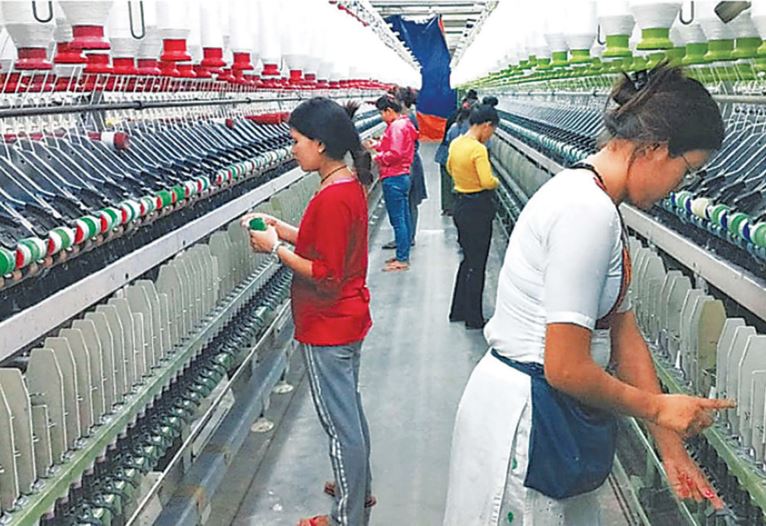The ongoing liquidity crisis is forcing the banks to cut back on lending, even to productive sectors
Rastriya Banijya Bank has been providing concessional loans and certain loans to the productive sector in recent months due to a lack of borrowable funds at normally resource-rich banks.

Due to the excessive lending in the first few months of the current financial year by almost all banks and financial institutions, the banking sector is now facing a shortage of creditable funds, which is often referred to in the banking industry as a liquidity crunch.
“We have stopped providing loans under all other headings except concessional loans and loans for the productive sector,” said Kiran Kumar Shrestha, chief executive officer of Rastriya Banijya Bank (RBB). “Even in the productive sector category, we only lend to the agricultural and tourism sectors.”
Agriculture, manufacturing, energy and tourism are among the productive sectors defined by the central bank.
Most other banks and financial institutions have also stopped lending because of the liquidity crisis.
According to Nepal Rastra Bank, loan-to-deposit ratios of banks and financial institutions are above the regulatory limit of 90 percent. This means that banks lent more than Rs 0.9 for every rupee received as deposits. The central bank has already told them to bring the ratios below 90 percent. A bank with a loan-to-deposit ratio of 90 percent or more cannot continue to lend, according to central bank guidelines.
The liquidity crunch in the banking system is clearly reflected in the lending by banks and financial institutions in recent months. For example, they made loans worth Rs. 11.4 billion to the private sector in the month of Magh (mid-January to mid-February) and Rs. 18.5 billion in the month of Falgun (mid-February to mid-March), according to central bank data.
When they borrowed excessively in the first few months of the current fiscal year, their monthly lending was also many times higher than in the past few months. For example, banks and financial institutions lent Rs. 187.3 crore in mid-August to mid-September last year.
Most of the credit went to sectors considered unproductive. A study conducted by the Confederation of Banks and Financial Institutions of Nepal (CBFIN), a coalition of bank promoters, found that lending to the unproductive sector has increased in recent years.
As of mid-December 2021, banks and financial institutions had outstanding loans totaling Rs 1,055 billion in areas whose purpose is not clear and such loans account for 23 per cent of the total outstanding loans of banks and financial institutions.
According to the study report, the proportion of such “purposeless lending” was 17 percent in mid-December 2020 and 16.42 percent in mid-December 2019.
According to the central bank, loans to the private sector grew by 22.2 percent in the first eight months of the current fiscal year compared to the annual target of 19 percent in the current fiscal year.
Total lending to less productive sectors, including wholesale and retail, finance, insurance, real estate, other services, consumer credit and others, stands at 59.18 percent as of mid-November 2021, according to the report.
As the liquidity crisis continued in recent months, banks have been forced to scale back lending overall. Credit growth to the private sector slowed from over 30 percent in the first half of the current fiscal year due to significantly reduced lending over the past two months.
Earlier, Finance Minister Janardan Sharma accused suspended Governor Maha Prasad Adhikari of failing to stop excessive lending, which not only contributed to liquidity crunches in the banking sector but also fueled imports and led to a sustained decline in foreign exchange reserves.
In media interviews, he has presented this issue as one of the reasons for the government’s crackdown on the governor.
But Minister Sharma fails to mention the government’s failure to spend the capital budget, which has also contributed to the current liquidity crisis in the banking sector. As of April 12, government capital spending was just 26.81 percent, according to the Financial Comptroller General Office.
Because of the liquidity crisis, even the manufacturing sector, which could help boost the domestic economy, cannot get credit.
Shrestha of Rastriya Banijya Bank admitted his bank has not been able to lend to all productive sectors as demand for credit is high. Recently, the central bank has also acknowledged that borrowers from the productive sector are unable to get enough credit.
“Because of the liquidity crunch, no sector has been able to obtain the desired amount of credit,” said Prakash Kumar Shrestha, head of the central bank’s economic research department. “If the productive sector does not get enough credit, it means that the sector’s contribution to the economy is reduced and the economy as a whole suffers.”
However, he said credit flows in the market had already exceeded the central bank’s target. “Due to credit expansion in the non-productive sector, this has not translated into economic growth,” the central bank’s Shrestha said.


Comments are closed.